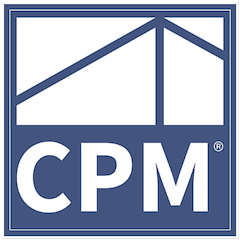Septic Tanks
A brief conversation about how to fix common septic tank problems
More than 2.7 million septic tanks lay buried in Florida. Many pollute our waterways. Cleaning them up will cost billions. Millions of Floridians flush toilets, take showers and wash clothes every day with little thought about all the waste flowing down the drains and into their septic tanks
But many of those septic tanks are too old, too close to each other, and too close to groundwater. Most were never designed to remove nitrogen. Statewide, nitrogen and other contaminants flowing into septic systems seep out through Florida's porous sands and limestone and into groundwater aquifers, polluting springs and waterways.
Besides this huge problem we face as a State, this purpose of this article is to share with home owners and real estate investors some of the problems and solutions for properties with septic tanks.
Septic systems often have problems that are not from age and Biomat clogging. Many septic tank problems have solutions that do not require replacement. The suggestions outlined below are merely guidelines. Contacting
a Licensed and Insured Septic Contractor
for assistance is your best first option when you have a septic system problem on your hands.
Symptoms of system failure may include:
- Liquid surfacing or soft spots in the soil over the septic tank or disposal field
- Green growth or dead spots over septic system
- Strange noises and gurgling in the plumbing lines
- Slow draining plumbing fixtures
- Septic odors in or around the house
- Complete backup of the plumbing in the house
- Liquid in septic tank higher than the inlet pipe
Causes of septic system problems and potential failure:
- Roots in septic tank
- Roots in disposal field
- Settling of septic tank
- Driving over or parking on the disposal field
- Animals on disposal field
- Medications or prescription drugs
- Water softeners
- Chemicals, paints, oil / automotive products in septic tank
- Bacteria and enzyme additives
- Hillside septic systems
Common septic tank “solutions”
- Pumping septic tank
- Filters (effluent)
- Bacteria and enzyme additives
- Replacing the drain field
Pumping septic tanks. Standard or conventional septic tanks should be pumped at least every five years. If not, solids will build up in the tank. The floating solids can get so thick that the inlet pipe from the house can become blocked and/or solids can leave the tank and settle in the disposal field. Plumbing fixtures, such as toilets, bathtubs and sinks, may drain slowly, make strange gurgling noises or completely stop draining. This can lead to premature disposal field failure.
If you are experiencing failure symptoms, having the tank pumped is a good first step to reduce the symptoms, but it’s not a full solution.
Effluent filters. Installing an effluent filter will prevent solids from flowing from the septic tank to the disposal field, which may give the disposal field a chance to drain. However, if the disposal field is clogged with Biomat, adding an effluent filter will not eliminate the Biomat that already exists.
Installing an aerobic system. Intestinal bacteria prefers an anaerobic environment, so adding oxygen to your septic system will help slow the growth of Biomat. However, an aerobic system by itself does not ensure that ‘good’ bacteria will thrive in the long term. Think about it – if aerators alone were able to permanently fix septic system problems, there wouldn’t still be systems failing all over the place.
Replace the drain field. This is the most frequently recommended solution by septic professionals. Replacement extends the life of your septic system by removing the Biomat, but it doesn’t prevent more Biomat from forming. From the minute the new drain field is installed, your septic system starts down the path toward failure again. Drain field replacement is also extremely disruptive and expensive, ranging anywhere from $7,000 to $50,000 or more.
Bacteria and Enzyme Additives. These are short–term fixes but work in most cases. Due to the septic system’s anaerobic environment, ‘good’ bacteria dies quickly and requires frequent addition of new bacteria. If you stop adding new bacteria, failure will likely recur. Enzymes in these products cause more suspended solids in the tank water, solids then pass to the drain field and cause premature septic system failure by clogging the soil around the drain pipes and preventing liquid from flowing into the soil as needed. At least you must add this bacteria once a month for the system to work.
There is Septic Technology that creates a unique environment rich with non-depletable oxygen where natural bacteria thrives and rapidly multiplies, digesting 90%+ of organic solids in the tank, and clearing the biomat clogging the drain field. One of these systems is the Septic Genie system (www.septicgenie.com). The company claims their special bacteria blend digests the solids before they have a chance to leave the septic tank. Some of the bacteria is carried to the drain field in wastewater, where it digests all built-up solids and Biomat, allowing your drain field to function properly once again.
Other companies such as Septic Drainer (www.septicdrainer.com) state that adding their product to the tanks address the main problem in the hard pan and provide drainfield soil restoration













